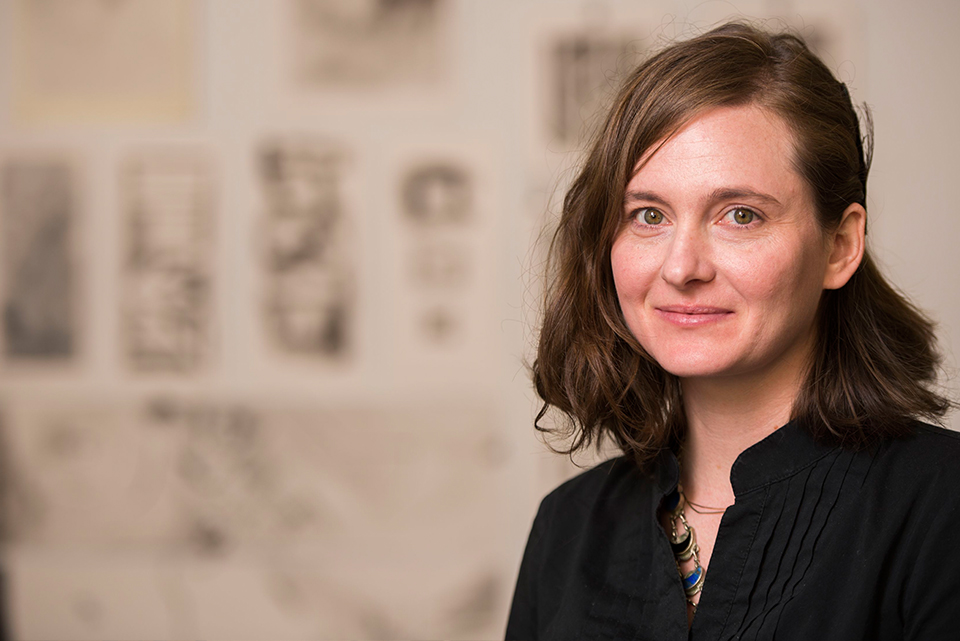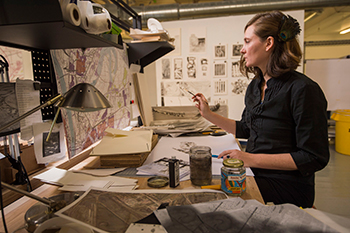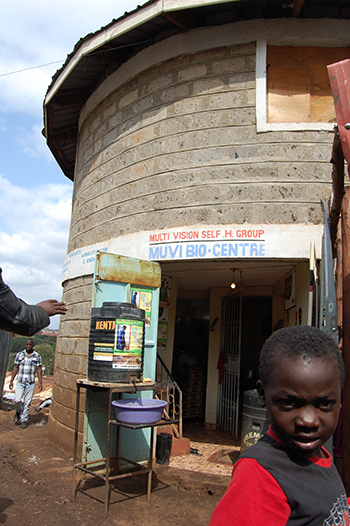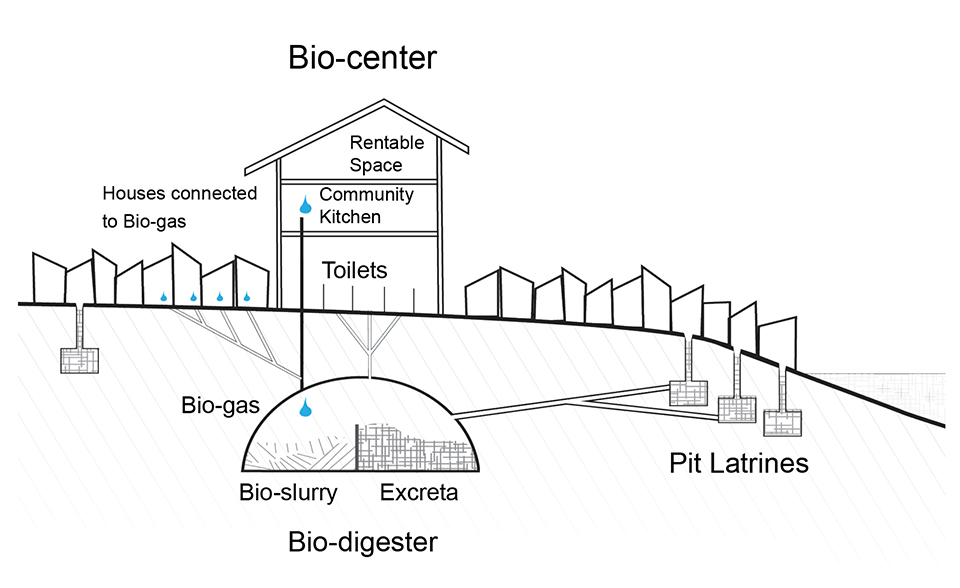
Godshalk in her Lewis Center studio.
Photo by Joe Angeles
No one knows how many people live in Kibera, Kenya. Estimates are contested but range from 200,000 to 500,000 to upwards of a million.
What is certain is that this century-old informal settlement, squeezed into one square mile on the northern bank of the Nairobi River, is among the most crowded and impoverished places on earth. It is also largely devoid of adequate sanitation infrastructure, says Andrea Godshalk, a master’s candidate in the Sam Fox School of Design & Visual Arts. Many residents are forced to use pit latrines, open sewers and “flying toilets.”
Indeed, according to the United Nations, approximately 2.5 billion people around the world currently live without access to adequate sanitation facilities. Yet just as cell phones have allowed poor communities to “leapfrog” communications technologies, so might bio-centers—which harvest methane gas and bioslurry (an organic fertilizer) from human and animal waste—provide an elegant and ecological alternative to Western-style sewage systems.

Godshalk in her Lewis Center studio.
Photo by Joe Angeles
“Cities require a lot of resources,” says Godshalk, who is earning degrees in both landscape architecture and urban design. “We bring in food, we bring in energy, we bring in material to make them function. I think the project of urbanism, more and more, is to make cities generative and to reduce that input as much as possible.”
In 2014, Godshalk won a Steedman Summer Travel Fellowship to study the emergence, economics and social impact of community-owned bio-centers in Kenya and Uganda. In particular, she focused on more than a dozen facilities built in Kibera with support from the Nairobi-based Umande Trust. Each contains about 12 toilet stalls, available to the public for around five Kenyan shillings, and an underground dome, which processes the waste through anaerobic digestion. In addition, each center includes a community kitchen, which utilizes the bio-gas, as well as rental spaces for restaurants, cafes, offices, banks, churches and other groups.

A bio-center in Kibera.
Courtesy of Andrea Godshalk
“These are profitable, self-sustaining businesses,” says Godshalk, who has presented her findings at conferences in Germany and Kansas. Indeed, she recounts how one bio-center was creating more gas and bioslurry than could be explained by the amount of waste deposited — a discrepancy, it was eventually discovered, due to the clandestine contributions of a nearby pit latrine. “So now Umande Trust is working with pit latrine owners to connect latrines to bio-center domes. In the process they convert a polluting sanitation option to an ecological one. And by aligning bio-center and pit latrine operators they quicken the expansion of ecological sanitation infrastructure.”
For Godshalk, the anecdote embodies the spirit of ingenuity—desperate but genuine—that has enabled Kibera to survive.
“This is how informal settlements are built and rebuilt,” she says. “They’re agile, they’re largely autonomous, they’re responsive to local conditions. If you look at an aerial map, you see that Kibera follows the path of the riverbed. It’s not just a grid carved on top of the landscape.
“I think informal settlements have a lot to teach us,” Godshalk concludes.

A diagram of a working bio-center.
Courtesy of Andrea Godshalk